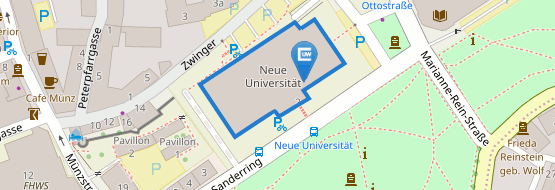Yo Kikuchi, Professor Emeritus of Toyohashi University of Technology and former Professor of Waseda University, Japan
06/25/2019Today we have an essay from Yo Kikuchi, Professor Emeritus of Toyohashi University of Technology and former Professor of Waseda University of Japan, about his experience in Wuerzburg for our readers.
My Würzburg University and my teacher Professor Dr. Hans J. Gross
By Yo Kikuchi (Professor Emeritus of Toyohashi University of Technology and former Professor of Waseda University, Japan)
When I have informed my retirement by age limit from Waseda University (Tokyo Japan) to the alumni office of Würzburg University in January of 2019, I had the honor of being invited to submit a manuscript for Alumni-Newsletter. From 1981 to 1982, I was a Humboldt Fellow at Würzburg University for two years. At that time my mentor was Professor Dr. Hans J. Gross of the Institute for Biochemistry at Roentgenring. I would like to write here about my respectable teacher Professor Hans J. Gross.
Hans is the very important teacher for me. I must not forget him in my life. How did I get to know Hans? Another important teacher for me, Professor Fujio Egami (1910-1982) introduced Hans to me. In early 1979 or 80, I wanted to study abroad. I asked Prof. Egami, where I should do my Post Doc training. He immediately told me that “Prof. Hans J. Gross, a young professor in Germany, is probably very good for you”. By the recommendation of Prof. Egami, I could turn to Hans. After some exchange between Hans and me and a very friendly invitation from Hans to me, I was able to come to Germany. At that time, Hans and his co-workers had elucidated the structure of viroids through intense effort and new experimental methods.
Viroids (virus-like) are among the smallest infectious agents of plants. They consist only of a circular ribonucleic acid and, unlike viruses, have no protein coat. To the best of our historical knowledge of science, this work was the first discovery of non-coding RNA.
Since I came to Germany as a Humboldt Fellow, I first had to go to a Goethe Institute for German language training. That was the very good opportunity for me because I can now write this manuscript in German.
In any case, the words of Prof. Egami, that Hans would be very good for my training and my future as a scientist, were the truth. Hans taught me a lot. The concept of science, how I proceed it, the importance of the experiment, the international sense. The members of Hans’s lab were very international. The students and researchers came from Germany, France, Poland, Russia, China, Japan (me) and so on. Hans’s lab was my first international experience. The experimental techniques that I learned in Hans’s lab at that time were of course very important subject for me, but I also learned many things that are important to a true scientist and human being. The experience in Hans's lab is still the basis of my current international activity and not only international, but also generally scientific.
After leaving Würzburg, I was able to do my scientific work in Japan as chief researcher of the Mitsubishi Kagaku Institute of Life Sciences (1982-1994), professor at Toyohashi University of Technology (1995-2014), and professor at Waseda University (2014-2019). I was able to convey what I learned in Hans’s lab to my students in Japan. My achievements can be seen in the URL of https://scholar.google.co.jp/citations?user=EMOeF-QAAAAJ&hl=ja if readers are interested.
I never forget Hans and Würzburg University. I clearly remember a banner at Würzburg Central Station under the blue sky for the Würzburg University's 400th year Festival when I left Würzburg in 1982.



